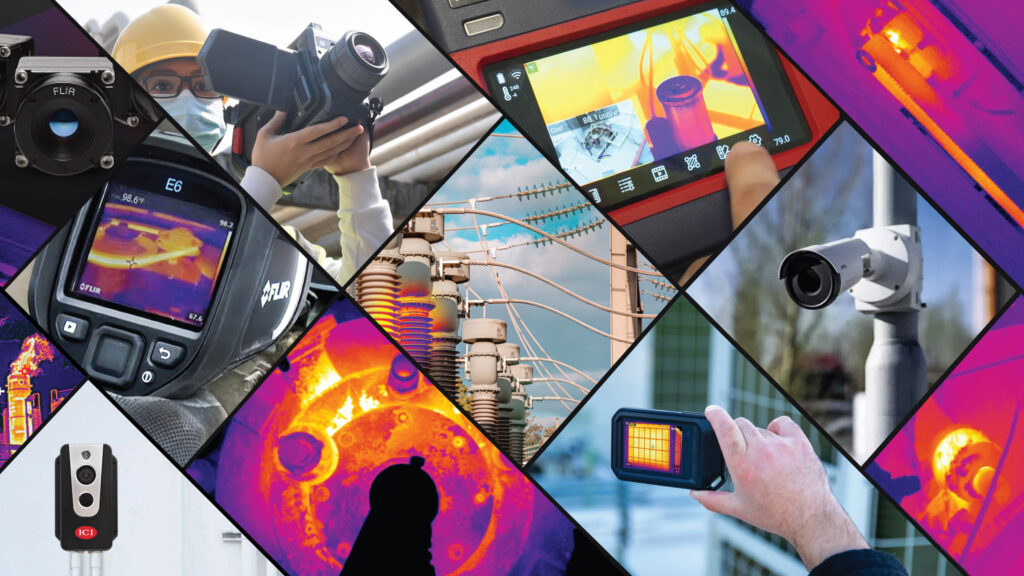Published by Merissa Stockton on Mar 24, 2020 6:00:32 AM
The World Health Organization declared COVID-19 a global pandemic on March 11, and the world is actively working to slow its viral spread. As of March 24, there are over 400,000 cases and 17,000 deaths worldwide. “Flattening the curve” with protective measures to relieve pressure on the healthcare system and prevent further deaths is a top priority.
Infrared Cameras and the Spread of the Coronavirus
Since a coronavirus vaccine is still months away from creation and mass distribution, the only way to slow down this virus is by limiting its exposure. Implementing coronavirus temperature screenings in airports, transportation hubs and ports, hospitals, and other locales helps reduce the pace of spread.
When combined with other clinical diagnostic procedures, infrared cameras are highly efficient and effective tools to use in temperature screenings. Infrared cameras detect elevated skin temperatures.
Thanks to the latest infrared technology, there are devices that, when used adjunctively with other methods of detection, can help slow the spread of COVID-19.
Benefits of Infrared Screening Systems
- Non-contact: Subjects do not need to be touched by screeners to perform scans.
- Immediate results: Temperature screenings take place in real-time as subjects pass in front of the camera. The system flashes an alert when a high body temperature is detected.
- High accuracy: Infrared cameras can deliver skin temperature readings with very tight margins of error.
- Portable: Infrared screening systems can be easily set up in most public spaces.
Best Practice for Public Temperature Screens
It’s important to remember to conduct temperature screens using infrared technology on an individual basis, one at a time. Proper implementation and execution will make the world’s recovery from COVID-19 much quicker.
Infrared Cameras Inc’s Medical Thermal Imaging Cameras
Infrared Cameras Inc manufactures several thermal infrared devices that can help prevent the spread of the Coronavirus. These IR cameras are proven to detect elevated skin temperatures brought on by various external causes like the coronavirus. This makes them a non-invasive first step for febrile detection. Perfect for adjunct use in hospitals, sub-acute health settings, public areas, such as airports and cruise ships, and more.
ICI and FLIR Infrared Cameras
In 2007, Infrared Cameras Inc and FLIR were selected for testing of a febrile screening system. ICI’s thermal device’s sensitivity was less than 0.2°C with a pixel resolution of 640 x 480 USB device versus FLIR’s 0.5°C with a pixel resolution of 320 x 240 Ethernet device. The technology was extremely similar with ICI and FLIR playing tug-of-war and alternatingly outperforming the other ever so slightly in various critical categories.
Both Infrared Cameras Inc and FLIR’s infrared device, when used in the correct environment, exceeded the ISO 13154 Standard for Human Febrile Temperature Screening. This standard was originally published in 2008 and updated in 2017.
The resulting data proved that ICI, a “small town” infrared camera manufacturer in Beaumont, Texas, is evenly contested with FLIR, a multi-billion dollar company. Since conducting these initial tests, Infrared Cameras Inc’s human temperature screening system continues to improve with better lenses and software algorithms, increasing accuracy, ease of use, and reliability.
Thermal Camera Use in Past Health Crises
Infrared Cameras Inc’s temperature screening device was brought to the public’s eye back in 2014 when an outbreak of Ebola, much like what is happening with the Coronavirus, was brought to the world’s attention. CEO and Founder of ICI, Gary Strahan, was interviewed on CNN shortly after the Ebola outbreak started. This assured the public eye that there was a way to potentially eliminate the spread of life-threatening pathogens.
Learn More About Medical Thermal Cameras
Infrared Cameras Inc has been developing and manufacturing thermal infrared cameras, as well as multi-spectral infrared cameras and complete package systems, since 1995 and is quickly becoming the fastest-growing infrared camera manufacturer in the world. In addition to skin temperature screenings, infrared cameras have widespread use in the medical field through their ability to precisely image all parts of the human body with utmost precision and detail.



